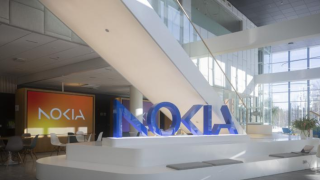NTT Communications recently moved to boost its presence in Frankfurt and Berlin. Michael Wheeler, executive vice president of the global IP network business unit, explains how this helps further strengthen the company’s position in Europe, and talks expansion prospects, 100G technology and network security.
What was the thinking behind adding new PoPs in Frankfurt and Berlin to your existing sites in Germany?
We have more than one facility in several markets worldwide, and it really comes down to where our target customers are located. Frankfurt’s been a big market for us in Europe for quite a long time, so adding new physical buildings makes sense when data centres fill up.
These German sites also tie back to our acquisition last year of data centre provider e-shelter, which already had a good-sized facility in Berlin – so adding a point of presence (PoP) there was a fairly modest cost for us.
Our core approach is that if we have enough customers or prospective ones in a given building in a market we’re already in, it’s a pretty low bar for us to have to climb to add a PoP. We also, of course, build out into whole new cities too, but doing that is always much more expensive.
How has the expansion into Europe gone over the past few years?
It’s grown an awful lot in a relatively short period of time. We started making a concerted effort to expand the network in Europe about five years ago. We now have a much bigger footprint and our customer base has grown significantly alongside that. In terms of customers and traffic, our European network really rivals our Asian network at this point.
Which markets might be next for expansion?
We assess this on an ongoing basis. The place where we see probably the most near-term opportunity is Latin America, although there are some major economic and political challenges in countries such as Brazil. However, our Sao Paulo PoP has grown significantly since we launched there five years ago and costs have come down, making it more attractive.
We are also looking regularly at Argentina, Colombia and Chile – but we always want to make sure the business case is sound before moving in.
How are 100G deployments going?
Most of the backbone architecture we needed to do to accommodate 100G upgrades has been in place for a while. But this year we’ve seen adoption of ports really pick up and start to grow exponentially as customers upgrade from 10G. All indications are that we’re going to continue seeing the same trend for the next couple of years.
The challenges that 100G faced in its early days have all been worked through from an engineering point of view, and costs have come down as more people head along that road.
A further factor is cross-connection between data centres. Simple maths tells you that if you have 30 10G ports with us today in Frankfurt, replacing those with just four 100G ports will both give you more capacity and mean you pay a fraction of the amount in cross-connect fees. So I think that’s something else that’s causing people to push ahead with 100G.
How does NTT Com view network security at present and how is the company addressing this?
The recent Krebs distributed denial of service (DDoS) attack was the first time we’ve seen such an attack on Internet of Things devices, and it was pretty large-scale. We have tools to deal with these types of event, such as our DDoS Protection Service (DPS) that can scrub and pass clean traffic to our customers, and we’ll shortly be announcing some enhancements to that product line.
We believe, however, that security is an area where our customers have to leverage multiple types of defence depending on the nature of the attack, so this offering is just one piece of that puzzle.
The sheer breadth of our network also plays a big part as a first line of defence, giving us more of an overview into how to shut down or deal with threats.




